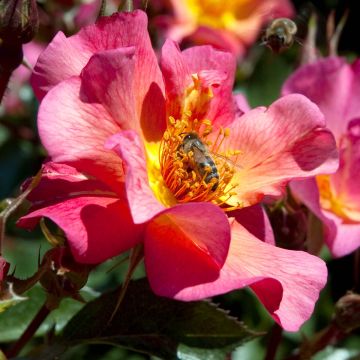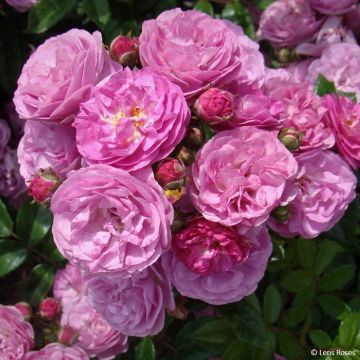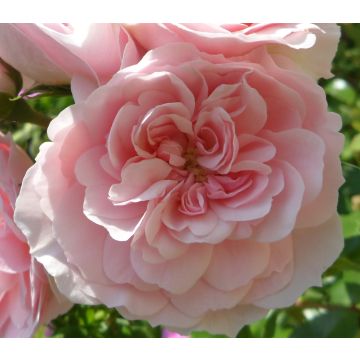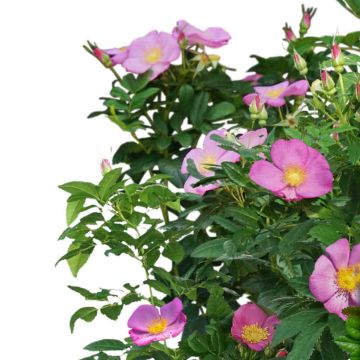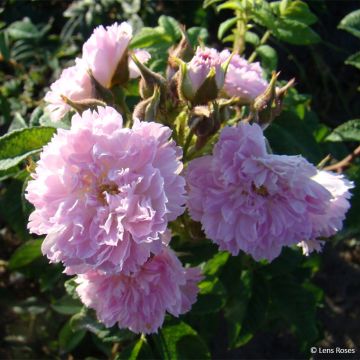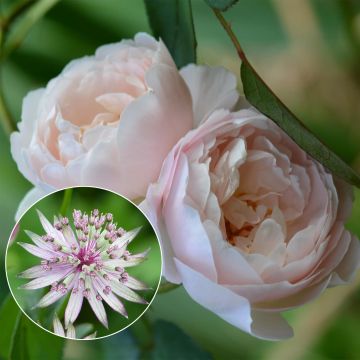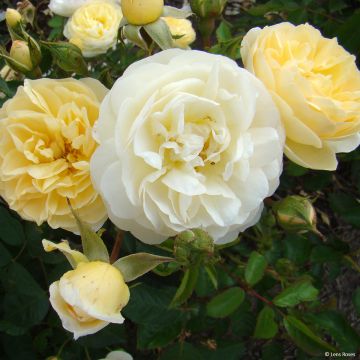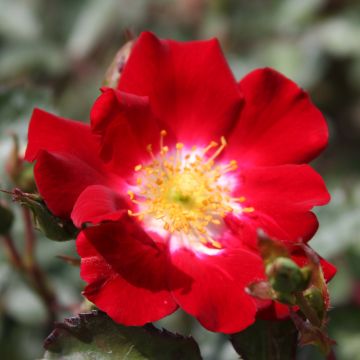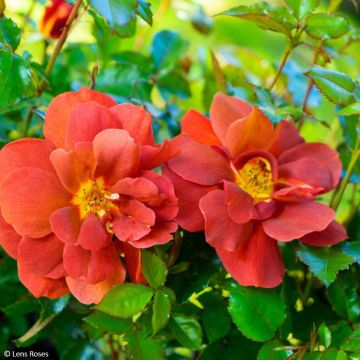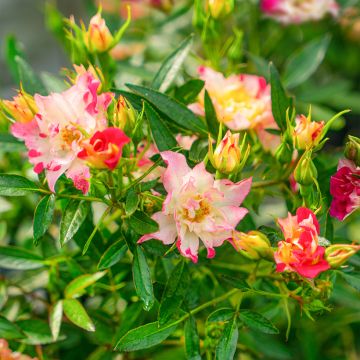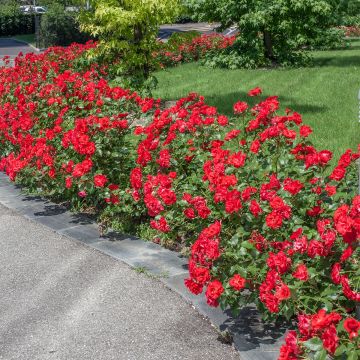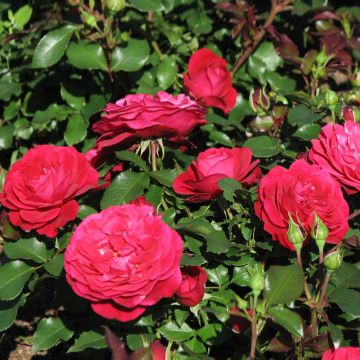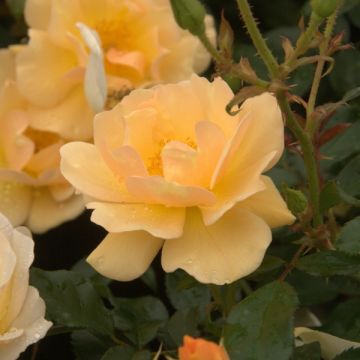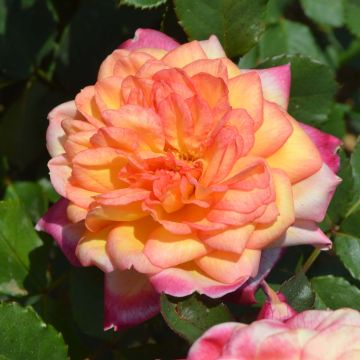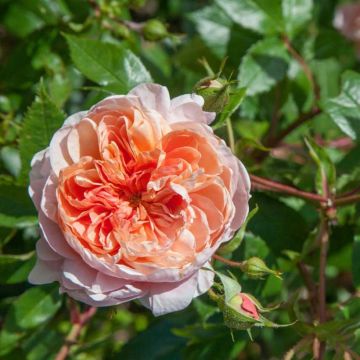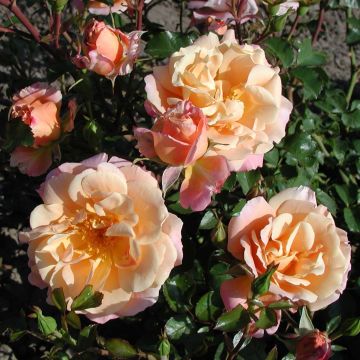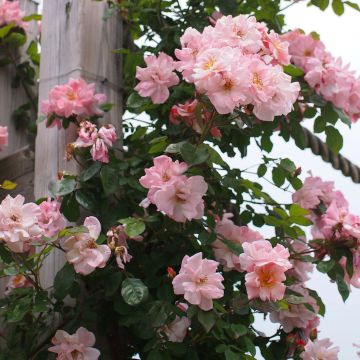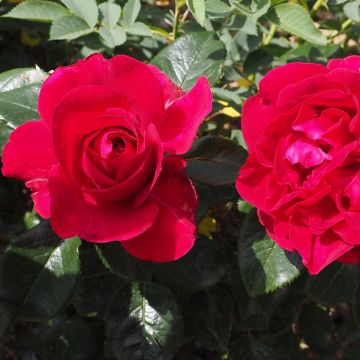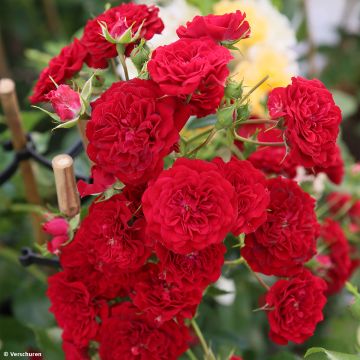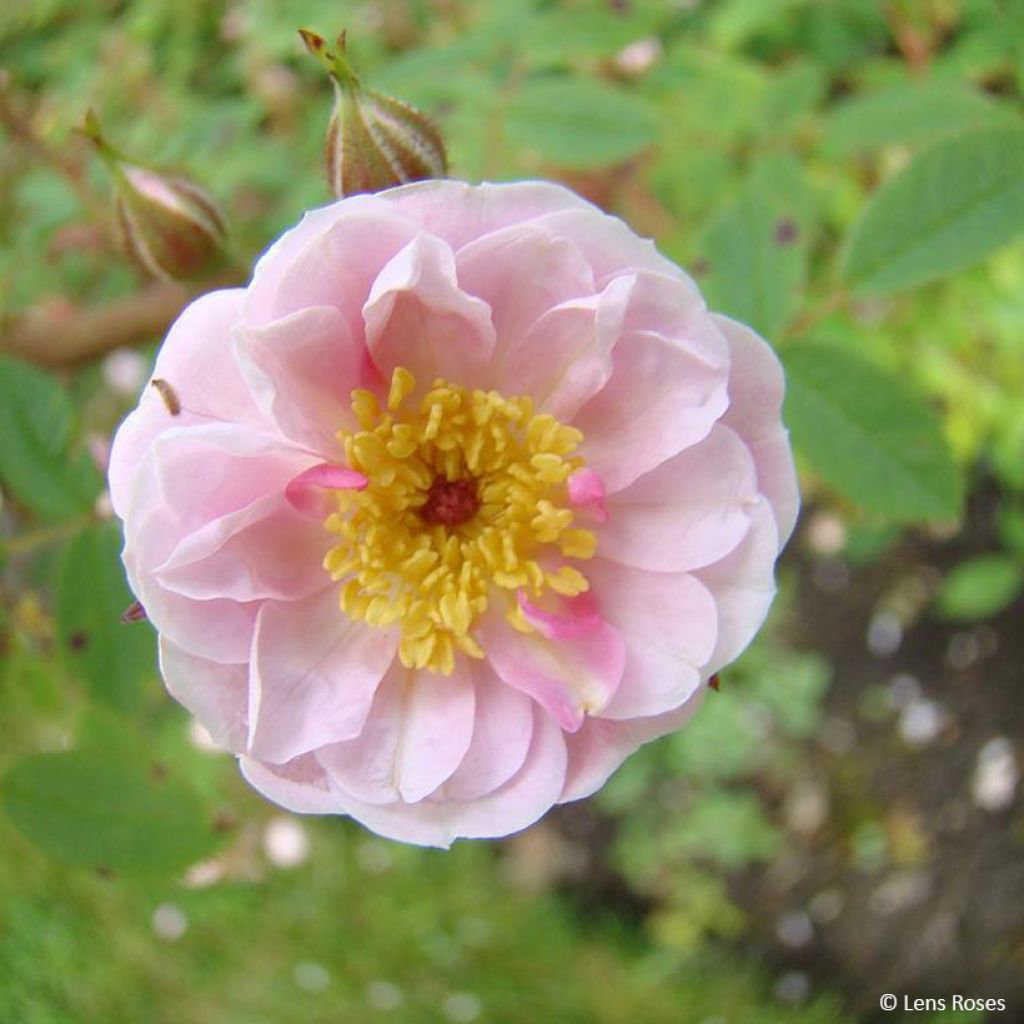

Rosa 'Belgian Lace'
Rosa 'Belgian Lace'
Rosa Belgian lace
This item cannot be shipped to the selected country
Delivery charge from €5.90
Delivery charge from €5.90
More information
Schedule delivery date,
and select date in basket
This plant carries a 24 months recovery warranty
More information
We guarantee the quality of our plants for a full growing cycle, and will replace at our expense any plant that fails to recover under normal climatic and planting conditions.
From €5.90 for pickup delivery and €6.90 for home delivery
Express home delivery from €8.90.
From €5.90 for pickup delivery and €6.90 for home delivery
Express home delivery from €8.90.
Does this plant fit my garden?
Set up your Plantfit profile →
Description
The Rose 'Belgian Lace' and Lenlord will delight gardeners looking for a graceful, unpretentious, low-maintenance variety. This modern hybrid rose is a small, low, dense bush with an arching habit and small leaves. It is not a repeat bloomer but produces numerous pastel rosettes in small clusters along its stems in early summer. 'Belgian Lace' requires no pruning and naturally forms a slightly blurry dome. It is ideal in a somewhat wild and romantic garden.
While modern roses are often criticised for their stiffness and weak disease resistance, the 'Belgian Lace' variety 'LENlord', created by L. Lens in 1994, stands out. It is a descendant of the 'Robin Hood' rose, a hybrid of the musk rose (Rosa x moschata). Like polyanthas and floribundas, roses in this family produce flowers arranged in clusters, but their colours are more refined and have a more flexible and graceful habit. This 'Belgian Lace' rose forms a small spreading bush with dense and arching branches. It will reach a height of about 90 cm (35in) with a spread of 1 m (3ft). It blooms in June-July on one-year-old branches. Along the branches, small flat flowers measuring 2 to 2.5 cm (1in) in diameter appear, composed of 17 to 25 petals, grouped in small clusters. They start light pink and fade to white. A red eye and numerous yellow stamens occupy the centre of the flowers. They are slightly fragrant and attract bees. The attractive light green foliage is divided into small leaflets. It is deciduous in winter. The hardiness of this rose is rated at -15 °C (5°F).
With its wild rose appearance and modest size, this' Belgian Lace' hybrid rose will find a place in the garden. It adapts to all soils that are not too dry and all climates, making it welcome in any garden, even at medium altitudes. When planted in mass, it borders pathways and highlights shrub beds. It pairs perfectly with beautiful and easy-to-grow plants like hardy geraniums (Geranium Blue Cloud, Anne Folkard, Nimbus, Orion), campanulas (passiflora, rapunculoides), catmints, ground cover roses in harmonious colours... Left to grow freely, it will form a light, flower-filled and wonderfully romantic mass in front of a bed of flowering shrubs.
Report an error about the product description
Plant habit
Flowering
Foliage
Botanical data
Rosa
Belgian lace
Rosaceae
Cultivar or hybrid
Other Landscape shrub Roses
Planting and care
To plant your 'Belgian Lace' rose, work the soil to a depth of 25-30 cm (10-12in) by crumbling the soil and adding a bottom planting amendment such as blood, fish and bone. Position your plant, freed from its pot, covering the top of the root ball with 3 cm (1in) of soil, fill the hole and water generously to eliminate any air pockets. In dry weather, it is necessary to water regularly for a few weeks to facilitate root growth. Also, remember to provide your rose with a special rose fertiliser that stimulates plant flowering.
Roses may develop stains or appear unsightly at the end of summer, but this is a natural occurrence that does not harm the rose's development.
Planting period
Intended location
Care
This item has not been reviewed yet - be the first to leave a review about it.
Roses by producer
Haven't found what you were looking for?
Hardiness is the lowest winter temperature a plant can endure without suffering serious damage or even dying. However, hardiness is affected by location (a sheltered area, such as a patio), protection (winter cover) and soil type (hardiness is improved by well-drained soil).

Photo Sharing Terms & Conditions
In order to encourage gardeners to interact and share their experiences, Promesse de fleurs offers various media enabling content to be uploaded onto its Site - in particular via the ‘Photo sharing’ module.
The User agrees to refrain from:
- Posting any content that is illegal, prejudicial, insulting, racist, inciteful to hatred, revisionist, contrary to public decency, that infringes on privacy or on the privacy rights of third parties, in particular the publicity rights of persons and goods, intellectual property rights, or the right to privacy.
- Submitting content on behalf of a third party;
- Impersonate the identity of a third party and/or publish any personal information about a third party;
In general, the User undertakes to refrain from any unethical behaviour.
All Content (in particular text, comments, files, images, photos, videos, creative works, etc.), which may be subject to property or intellectual property rights, image or other private rights, shall remain the property of the User, subject to the limited rights granted by the terms of the licence granted by Promesse de fleurs as stated below. Users are at liberty to publish or not to publish such Content on the Site, notably via the ‘Photo Sharing’ facility, and accept that this Content shall be made public and freely accessible, notably on the Internet.
Users further acknowledge, undertake to have ,and guarantee that they hold all necessary rights and permissions to publish such material on the Site, in particular with regard to the legislation in force pertaining to any privacy, property, intellectual property, image, or contractual rights, or rights of any other nature. By publishing such Content on the Site, Users acknowledge accepting full liability as publishers of the Content within the meaning of the law, and grant Promesse de fleurs, free of charge, an inclusive, worldwide licence for the said Content for the entire duration of its publication, including all reproduction, representation, up/downloading, displaying, performing, transmission, and storage rights.
Users also grant permission for their name to be linked to the Content and accept that this link may not always be made available.
By engaging in posting material, Users consent to their Content becoming automatically accessible on the Internet, in particular on other sites and/or blogs and/or web pages of the Promesse de fleurs site, including in particular social pages and the Promesse de fleurs catalogue.
Users may secure the removal of entrusted content free of charge by issuing a simple request via our contact form.
The flowering period indicated on our website applies to countries and regions located in USDA zone 8 (France, the United Kingdom, Ireland, the Netherlands, etc.)
It will vary according to where you live:
- In zones 9 to 10 (Italy, Spain, Greece, etc.), flowering will occur about 2 to 4 weeks earlier.
- In zones 6 to 7 (Germany, Poland, Slovenia, and lower mountainous regions), flowering will be delayed by 2 to 3 weeks.
- In zone 5 (Central Europe, Scandinavia), blooming will be delayed by 3 to 5 weeks.
In temperate climates, pruning of spring-flowering shrubs (forsythia, spireas, etc.) should be done just after flowering.
Pruning of summer-flowering shrubs (Indian Lilac, Perovskia, etc.) can be done in winter or spring.
In cold regions as well as with frost-sensitive plants, avoid pruning too early when severe frosts may still occur.
The planting period indicated on our website applies to countries and regions located in USDA zone 8 (France, United Kingdom, Ireland, Netherlands).
It will vary according to where you live:
- In Mediterranean zones (Marseille, Madrid, Milan, etc.), autumn and winter are the best planting periods.
- In continental zones (Strasbourg, Munich, Vienna, etc.), delay planting by 2 to 3 weeks in spring and bring it forward by 2 to 4 weeks in autumn.
- In mountainous regions (the Alps, Pyrenees, Carpathians, etc.), it is best to plant in late spring (May-June) or late summer (August-September).
The harvesting period indicated on our website applies to countries and regions in USDA zone 8 (France, England, Ireland, the Netherlands).
In colder areas (Scandinavia, Poland, Austria...) fruit and vegetable harvests are likely to be delayed by 3-4 weeks.
In warmer areas (Italy, Spain, Greece, etc.), harvesting will probably take place earlier, depending on weather conditions.
The sowing periods indicated on our website apply to countries and regions within USDA Zone 8 (France, UK, Ireland, Netherlands).
In colder areas (Scandinavia, Poland, Austria...), delay any outdoor sowing by 3-4 weeks, or sow under glass.
In warmer climes (Italy, Spain, Greece, etc.), bring outdoor sowing forward by a few weeks.

































